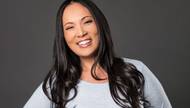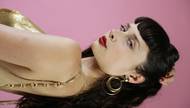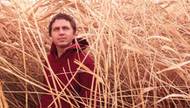The main spectacle of the Professional Bull Riders' inaugural Cowboy Spring Break (May 22-24 at MGM Resorts Village) is the cowboys, and not while they’re floating in the pool—while they’re gripped one-handed to professional bucking bulls.
Ranked No. 10 in the PBR’s Built Ford Tough Series, Reese Cates is one to watch at the festival's Last Cowboy Standing competition, with $250,000 on the line for the top 50 riders. But Cates isn't thinking too much about strategy. He’s focused on having a good time and making the best of the hand he’s dealt, whether he’s drawing bulls or cards at the blackjack table.
Given what your job is, I'm wondering if you have any fears outside the ring. I don’t like snakes. And where I live we have a lot of snakes. … Most of the time it’s whenever you’re fishing or hunting. I’ve actually had them in the boat with me, and you talk about freaked out!
You're from Arkansas. Are there pockets of the country that are strongest when it comes to producing bull-riding talent? It’s ever-changing, really. … It just seems like Texas will always have a good crop of rodeo cowboys, because it’s such a big state and there’s such a Western way of life down there. Whereas other states kind of fluctuate. There'll be a period where there's four or five guys who ride really good from a state at one time and then that state may go through a drought. ... But in any generation of the sport, there always seem to be a few good bull riders from Texas.
You come from generations of bull riders and grew up in the tradition, and it seems like a lot of guys in the top ranks of the sport have similar backgrounds. Are there some wild cards? There’s actually quite a few guys that are at an elite level who didn’t start riding bulls until later on in life. Sean Willingham is one; he was 17 or 18 years old before he got on his first bull. And Billy Robinson was another guy who was 17 or 18, maybe even 20. He was pretty old by the time he got started. Now he’s one of the oldest guys on tour because he didn’t go through a lot of injuries whenever he was younger, and now his body’s been able to hold up and he's become one of the oldest guys to remain on tour this long.
Bull riders tend to have pretty impressive lists of injuries, and I've heard they sometimes ride through them. How about you? I broke my jaw. I’ve had shoulder-reconstruction surgery. I broke some ribs, punctured and collapsed my lung, and then all the other nit-picking stuff like a torn bicep muscle, torn groin muscles. I’ve had surgery on my riding hand and a lot of other little stuff. But I think the main thing that causes a lot of injuries, at least for me, is riding while hurt. Whenever you have a little nagging injury and you’re trying to push through it and then it causes you to make compromises in your riding and then therefore makes you vulnerable for injury—whenever you do that you’re just setting yourself up for disaster. The longer I’ve been a part of the PBR and the longer my career’s been going on, one thing I can definitely say is that I’ve learned my body. I know whenever I’m just sore and I’m still able to ride and I know when I’m hurt and I need to go home and heal up for a little bit. But it is hard, you know, especially when you’re young. It’s really hard to determine when you need to be tough and when you need to heal up. Now, thanks to the PBR, the money is starting to get to where we can make a decent living so that if a guy does happen to get an injury that he needs to go home and nurse back to health, he’s able to go do that. Now, obviously, under certain circumstances that may not be the case. If you’re in the contention for world champion that year, then you might ride through something that you would otherwise say, "Hey, I’m only in the top 15, I broke my ankle and I need to take a couple weeks and let it get to feeling better." If it's, "Hey, I’m No. 2 in the world, I broke my ankle and I need all the points I can get," there’s a little bit of a different mind-set there, I would think.
Do you just land on the other foot? You just jump off and hope for the best, really. That’s all one man can do right there, is hope that you’re taped up good enough that it doesn’t hurt that bad and just go for it.
Given your ranking, what's your strategy coming into Vegas and Last Cowboy Standing? My mind-set is to go to Vegas and to try as hard as I can on every single bull that I get on and to have as much fun as I possibly can. ... You set yourself up for a lot of disappointments whenever you try to make too many game plans, because if you’re hoping to draw a certain bull or a certain type of bull and then you show up and you don’t, then you start playing mind games with yourself. … Then you’re over-analyzing way too much by that point. So I think as a bull rider, you’re somewhat called to make the best out of every situation that you’re presented with in the arena as far as what you draw and how you feel when you get there or how many points you can get. None of that really matters. The only thing that you can control is putting out as much effort as you possibly can when you get there and making a vow to enjoy yourself while you’re there. Those are two things I can guarantee that I’m gonna do. I’m gonna enjoy myself and I’m gonna put out some effort. The rest of the time I’ll just let the chips fall where they may.
I've always wondered, are you counting the eight seconds in your head during a ride, or is it a gut feeling you develop over time? Sometimes you make a mistake and you get off a little too early, but I think your subconscious kind of has its own clock, and when you start getting close to the whistle you know you’re close; you know you’ve been riding for a while and you start expecting to hear it pretty soon. But as far as knowing exactly when—no. You have to listen, and I think your body’s trained to listen.
I've seen some pretty spectacular flights off the backs of bulls, with guys sometimes bouncing off like pinballs. Is that a big consideration for riders? Yeah, that’s probably the main thing is the dismount, because you hear old-timers say all the time: the safest place to be is on their back, which, there’s a lot of truth in that. Now that our bullfighters have gotten to be so good with Jesse and Frank and Shorty and another guy named Cody Webster that steps in sometimes, those guys are getting so good that being on the ground’s not really even that dangerous anymore. The dismounts are usually high-flying and wild-looking. We try to control ’em as much as we can, but sometimes we’re out of control when the whistle blows and we just have to kind of roll with it and hope for the best whenever we hit the ground.
Do bull riders look the part when they're not in the spotlight? When we’re traveling and we’re in our comfortable clothes people don’t really believe we’re bull riders 'cause we’re not wearing Wranglers and our cowboy hats. It wouldn’t make much sense to wear Wranglers, cowboy boots and a cowboy hat when I'm sitting in the car for 12 hours, to be honest. ... If you saw any of us at one of the pool parties [at Cowboy Spring Break], you would not know that we were bull riders, unless you knew what a bull rider looked like.
With any sport, certain parts of the body get overdeveloped. What are some of the main ones for you guys? I’ve done some MMA training, and a lot of times whenever you’re grappling with those guys they’re really amazed because they can’t break guard on you because your groin is so strong and you can just kind of wrap ’em up. Another thing that’s usually overdeveloped is the arm that you ride with. You can tell a guy’s dominant hand by looking at him, most of the time.
Your Twitter feed seems pretty active with PBR fans. Any good stories about interactions with them? (Laughs) Oh yeah. There’s been some times that there’s been some crazy stuff happen with fans, and, man, you just gotta love ’em. That’s about all I can say. You just gotta love ’em. (laughs)
They seem stoked about your performance so far, but are you happy with where you stand in the PBR? I’m happy with what I’ve accomplished this year, but I’m not satisfied, so there’s a lot more to be done before 2015’s over with. And I’m looking forward to it.
Why do you ride? It’s a passion for the sport, and it’s a passion that we’ve all had since we were just young kids. People always want to look at the negative things about the sport, about how dangerous it is or how little we get paid as opposed to what most professional athletes do. But it’s not even about that. I think more than anything it’s a way of life. Everybody that’s there, they may not have been raised a cowboy, but they were born a cowboy even if they didn’t know it. Whenever it gets in your blood, you can’t shake it. To give up on a dream that you have would be way more painful than any injury or any adversity that you could ever come against in the arena actually riding bulls. That’s the reason you see the guys riding with so much passion is because it’s their dream. They’re doing something that they love and they wouldn’t trade it for the world.
Do you have a favorite bull? There’s one that I’ve had both times this season when I won an event, and his name’s Percolator, so I gotta be partial to him. He’s just a cool bull. He’s at nearly every stop. He’s been everywhere from New York City to Anaheim, California, and all points in between, and he still tries his heart out every time and he’s still one of the best bucking bulls in the world. He’s got some really big horns and he jumps way in the air and he takes really cool pictures. And whenever he’s done, he’s done. You hit the ground, he turns around and walks off—he’s not a mean bull. He’s got a lot of personality, and he tries as hard as he can every time, and I can’t wait to get on him again. I’m ready right now! I hope I have him in Vegas, actually.








